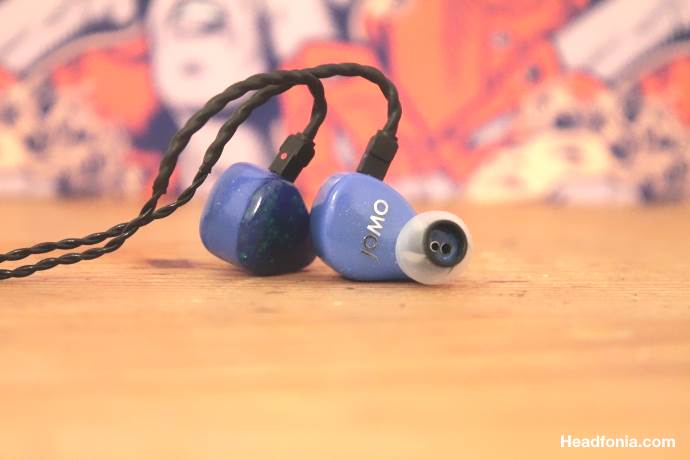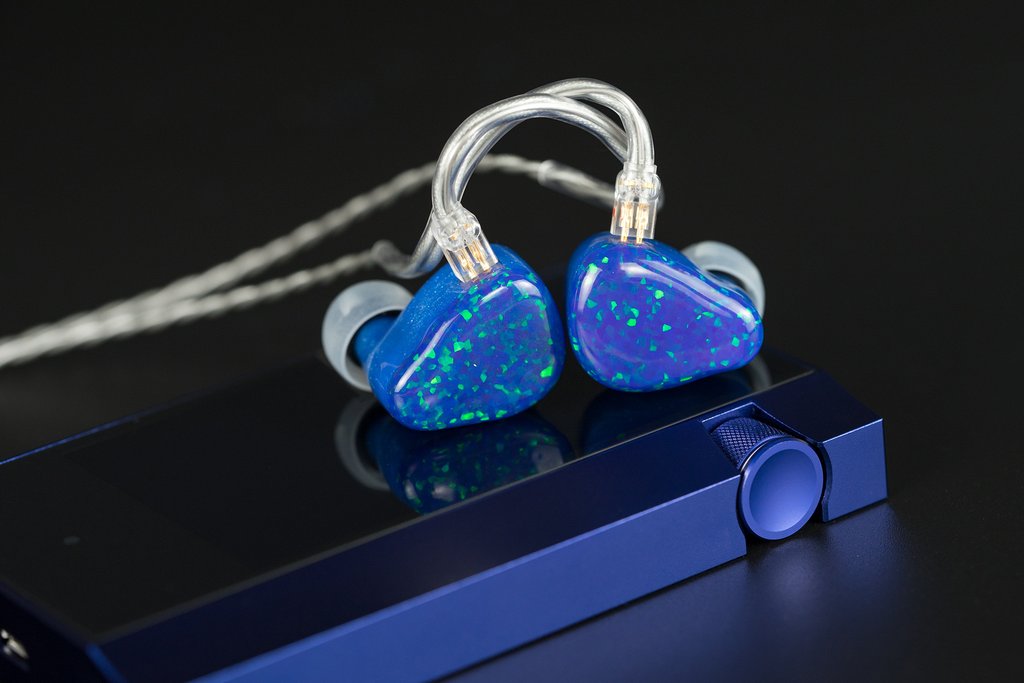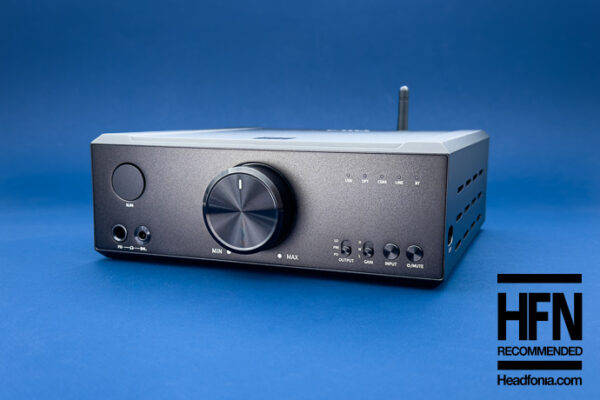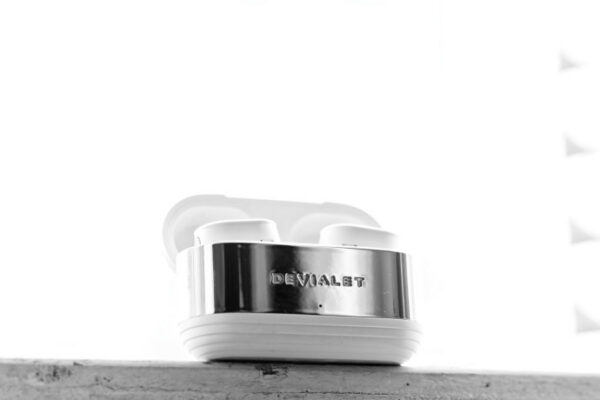Sound
Ever since I saw Jomo pop up on my Facebook feed many moons ago I have been curious about them. They are capable of some very fine designs when it comes to customs, but since Europe is kind of a portable audio third world I wasn’t able to demo any of their recent offerings. So I was very glad that I finally got the opportunity to listen to their latest universal for an extended period with my own gear. Again, many thanks to Jomo for the support!
My main sources for this review were the Astell&Kern AK380 and Chord Electronics’ Mojo, more sources will be covered later in this article.
I always try to stick with the supplied accessories when I evaluate a new product, since this is what the customer will get in the end. I started out with exactly that, but the standard cable was so haptically unpleasing to use that I replaced it shortly after my first few listening sessions. I didn’t expect a lot of improvement sound wise, but to my surprise the standard cable of my Noble’s improved the sound quite a bit. The sound got cleaner and overall a tad more relaxed. Just recently Noble replaced the memory wire on their cables with pre-formed heat-shrink, which wraps around the ear extremely comfortably. I don’t even notice the cable anymore.
What I first noticed on these gems was the bass, it is very present, reaches deep and has great impact to it. Bass is heavenly textured, smooth and well controlled. This definitely is one of the strong suits of the Jomo PLB. Lower mids are receiving a little boost from the bass department, giving a fuller body to the presentation. Mids are tuned to a more forward signature, elevating vocals to the center of the sound. Highs are well displayed, at times they can sound a little harsh, but mostly they are nicely softened.

The sound signature is of dark tone with a lot of weight to the instruments. Separation is good, but not outstanding. Clarity improved with replacing the standard cable but is still overshadowed by some of the lower frequencies.
Sound stage is relatively big in terms of depth and width, it does not excel as much on the X-axis as it does on Y and Z, which results in a more realistic performance. PLB is a very fast in ear monitor that definitely is suited for most electronic genres. One artist I always like to listen to is IDM pioneer Aphex Twin. PLB manages to recreate his last Album Syro with a big fun factor. Bass is again well controlled but the elevated lower mids can cover up some of the beautiful clarity I like about his masterings. Aphex Twin (aka Richard D. James) likes to play with piercing high tones at times, not particularly in Syro, but his previous work has shown some notes that can become uncomfortable. PLB reproduces exactly that, which makes some of James’ tracks unlistenable. But that isn’t really Jomo’s fault, I blame Aphex Twin for that.
Live recordings, such as Bonaparte’s album 0110111, have great staging, I always use this album to get things done at work, as it motivates and pushes me. Imaging is good, but not outstanding. Stage is realistically built, yet it does not reach out of your head. What I miss with this particular album though is the toe tapping factor. With other monitors I find myself tapping my feet to the beat. The Jomo PLB doesn’t get me there, it struggles a bit to properly separate the instruments and put it in place.
The little beast was tuned to be a perfect match for modern, fast and bass intense music. That Jomo has achieved!

More laid back music, such as Ambient, Downbeat, Classical, Nu-Jazz etc might become a little too heavy to listen to with PLB. The full sound the beast spits out can be too much. It at least was for me. I mainly stuck with faster and punchier genres for PLB as this is where it shines.
Source matching
The Jomo PLB is a very easy going IEM when it comes to finding a partner, most of my sources have shown great synergies with it.
Astell&Kern – AK380
My source of choice on my daily commute and whilst travelling. A very powerful and dynamic duo is formed with PLB. As mentioned earlier bass is the main focus of this monitor. Soundstage is nicely big and has top layering. It’s a very fun and energetic combo.
Astell&Kern – AK70
AK’s best offering in my opinion. Stage does not reach as far, deep and wide as with the current flagship, but still has a very organic feel. The entry level Astell&Kern sports a more laid back signature with lush midrange. With PLB as its driver fun is guaranteed. Clarity though suffers a bit and resolution is better on the 380, but that one also costs about seven times more…
Chord Electronics – Mojo
Chord’s game changing portable FPGA based D/A converter is known to have high resolution, massive stage and incredible amounts of detail. The Jomo PLB is a very good companion for Mojo, again most enjoyable are electronic genres. Excellent layering and separation are the offspring of their love affair. The more focused low ends of PLB match very well with the blood missing D/A converter from Britain. I found this setup to be very good and have enjoyed it at work a lot.

Cozoy – REI
That’s what I call a perfect match. REI is a super tiny D/A converter that hooks easily to any smartphone or PC/Laptop. Converts high resolution signals up to 32bit and 384kHz. It features a very organic and lifelike presentation. It easily transforms any smartphone to a more than capable competitor to any HiRes audio player around. REI and PLB deliver incredible sonics with lots of emotion, big stage and an organic signature. There’s the toe tapping bit I was missing before!
Aftermarket cabling
As noted earlier in this article I have almost instantly replaced the supplied cable with the one Noble Audio offers with their entire range. It has brought the little beast to a more clear picture and cleaner sound. The hectic bit from the beginning was taken away and a more relaxed signature was accomplished. For the sake of this review I have replaced Noble’s cable with Effect Audio’s Leonidas. A four braided silver/gold hybrid cable. Terminated to a 2.5mm balanced plug. With a 2.5mm to 3.5mm stereo plug adapter I hooked it up to my main source.
With this high end IEM cable a layer of veil appeared to be removed from the sound. It received more air between the instruments, separating them with bigger care. Sound stage got taller and wider as well as deeper. High notes were pronounced with higher precision and bass was tightened up. The elevated lower mids were more tamed which made the entire sound experience more pleasing and took off some of the previously mentioned weight. With Leonidas more genres became enjoyable. It turned the Jomo PLB into more than just an EDM earphone it became more of an all-rounder.
Continue on page three for Comparisons and Conclusion







